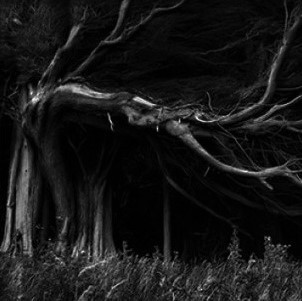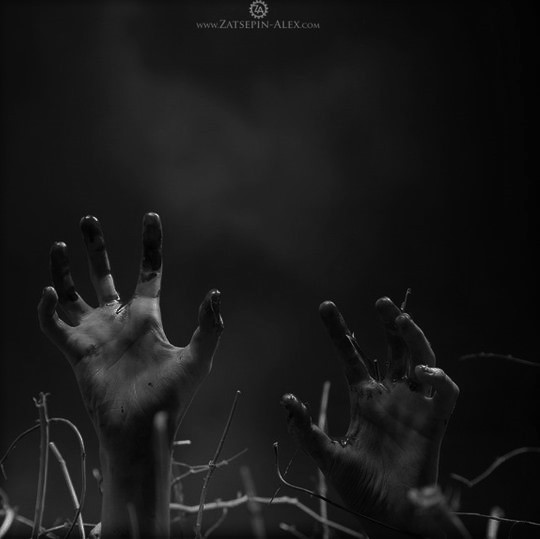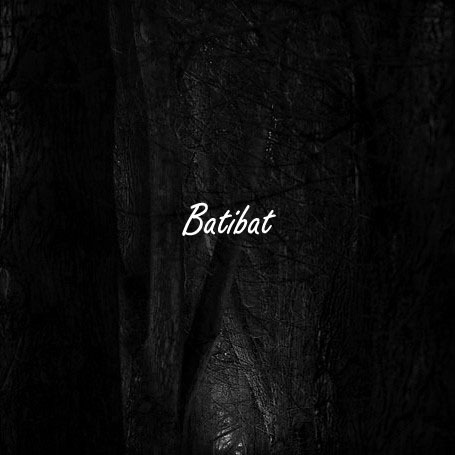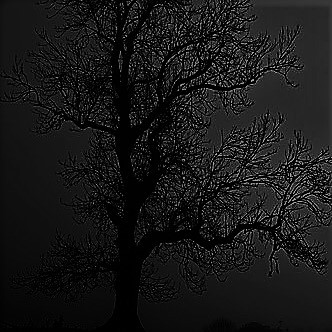#bmwac*
Photo









Badass Mythical Women and Creatures → Scáthach
In the Ulster Cycle of Irish Mythology, Scáthach (“The Shadow” or “Warrior Maid”) is a warrior woman and martial arts teacher that runs an instructional school for young warriors, called Dún Scáith. She taught the Ulster hero Cú Chulainn, and gave her deadly spear, Gáe Bulg, to him. She also blessed the marriage of her daughter, Uathach, to Cú Chulainn.
Scáthach is the daughter of Árd-Greimne of Lethra, and sister of Aífe. The two sisters were fierce rivals, and after Aífe threatens Scáthach and her land, Cú Chulainn nearly kills and rapes Aífe.
#scáthach#scathach#ulster cycle#irish mythology#irish folklore#gaelic mythology#gaelic folklore#celtic mythology#celtic folklore#aife#cu chulainn#dun scaith#uathach#bmwc*#bmwac*#mythedit#mythology meme#mythology aesthetic#myth moodboard#mine#tw: bloody hands
818 notes
·
View notes
Text
But, but, but....

submitted by /u/BMWAC
[link] [comments]
from bicycling https://ift.tt/3xt0pjy
0 notes
Photo









Badass Mythical Women and Creatures → Kikimora
In Slavic mythology, a Kikimora is a mischievous domestic fairy that lurks in pantries and cowers behind ovens. If a house was orderly, she’d look after it and their chickens. If not, she’d break plates, whistle obnoxiously, and spin during the night. A Kikimora often tickles or sits on the chests of sleeping people. She causes a form of sleep paralysis in her victims, much like the Mora.
#kikimora#slavic mythology#slavic folklore#mythedit#myth moodboard#myth meme#myth aesthetic#bmwac*#bmwc*#fyeahmyths#immortalmyths
71 notes
·
View notes
Photo









Badass Mythical Women and Creatures → La Sayona
La Sayona is a Venezuelan legend of a vengeful spirit who appears to men having extramarital affairs. She has been known to devour men, mutilate and mangle them, rip off their genitals, or give them sexually transmitted diseases.
#la sayona#venezuelan folklore#venezuelan mythology#mythedit#myth moodboard#myth meme#myth aesthetic#bmwac*#bmwc*#fyeahmyths#immortalmyths#mythologicalnet#i actually really like this
50 notes
·
View notes
Photo









Badass Mythical Women and Creatures → Sphinx
In Greek mythology, a Sphinx was a female monster that had a lion body and wings protruding from its back. She was fond of riddles and those who answered incorrectly were often eaten by the ravenous beast. She was the daughter of Echidna and Typhon, and was considered a demon of death, disease and bad luck. The Sphinx lived on a rock near Thebes, and posed the same riddle to every passerby: “What animal is that which in the morning goes on four feet, at noon on two, and in the evening upon three?“ Oedipus finally solved her riddle after years of her killing those who didn’t, and the Sphinx threw herself off the rock in despair. The answer was man, who “in childhood creeps on hands and knees, in manhood walks erect, and in old age with the aid of a staff.”
There is also a mention of the Sphinx in both Egyptian and Persian mythology, though they are men and are far more benevolent than the Greeks’ Sphinx. They are said to be guardians, particularly of pyramids and burial sites.
#sphinx#greek mythology#greek myth#egyptian mythology#egyptian myth#mythedit#mythology aesthetic#myth moodboard#myth meme#bmwac*#bmwc*#oedipus
90 notes
·
View notes
Photo









Badass Mythical Women and Creatures → Witte Wieven
In Dutch mythology and folklore, a Witte Wieven (“White Woman” or “Wise Woman”) is a ghostly figure that was once a medicine healer and herbalist. Witte Wievens also had a gift of seeing the future, and were revered in early Dutch society because of this. When they died, their graves were honor in such a way that many were believed to come back as ghosts. They lived in sacred areas like burial places or gravehills. Witte Wievens plucked flowers and threw them on the ground at nighttime, and often helped those who needed it.
After the Christianization of Europe, Witte Wievens were believed to be evil ghost witches that hindered travelers and were only scared off by hissing at them. They were reputed to be pests and pranksters and many local legends were changed to demonize them.
#dutch mythology#dutch folklore#witte wieven#bmwac*#bmwc*#fyeahmyths#immortalmyths#mythedit#mythology meme#mythology aesthetic#myth moodboard#i'm so proud of this edit#it is so pretty
167 notes
·
View notes
Photo









Badass Mythical Women and Creatures → Púca
In Celtic mythology, the Púca is a mischievous shapeshifter that can help or hinder those who encounter her. She is a commonly seen as a black horse, a goat and a hare or a human with animalistic qualities. She brings about either bad or good fortune, leading to ambiguity concerning her true nature. Her name has many variations (pooka, phouka, phooka, phooca, puca or púka), and so do the legends relating to her.
#puca#celtic mythology#celtic folklore#bmwac*#bmwc*#mythedit#myth meme#myth moodboard#myth aesthetic
43 notes
·
View notes
Photo









Badass Mythical Women and Creatures → Xanas
In Asturian mythology Xanas are beautiful women with long blonde hair that inhabited waterfalls and the surrounding forested areas. Neither malicious nor benevolent, Xanas will either help travelers and give them miscellaneous treasures, including a potion of love and joy. Xanas do, however, steal away human children and replace them with Xaninos, their own children, because they cannot take care of them by themselves. Xanas sing lovely melodies that cause those pure of soul to feel peace and happiness, while those unclean will be driven insane.
Xanas are also interpreted as small, dark-colored imp-like creatures that enter keyholes of houses to steal or bite people. These Xanas are clearly malicious, and unlike the previously described Xanas.
#xanas#xana#asturian mythology#asturian folklore#bmwac*#bmwc*#mythedit#myth moodboard#myth meme#myth aesthetic
22 notes
·
View notes
Photo









Badass Mythical Women and Creatures → The Keres
In Greek Mythology, the Keres were bloodthirsty spirits of violent death. Their influence included death in battle, by accident, murder or ravaging disease. The Keres would feast upon the blood of these victims after sending them to Hades, and were often found doing so on the battlefield. They have been compared to the Valkyries of Norse mythology, but are far more malevolent.
The Keres were the daughters of Nyx and Erebus. They worked with their sisters, the Moirai, and their brother was Thanatos, god of nonviolent death. The Keres are portrayed as ugly, blackened figures with black wings and terribly sharp claws needed to rip into flesh. Some believe the Keres were personifications of epidemics, while others believe they are the Evils released from Pandora’s Box.
#greek mythology#bmwac*#bmwc*#the keres#keres#mythedit#mythology meme#mythology moodboard#mythology aesthetic#immortalmyths#fyeahmyths#nyxanderebus
82 notes
·
View notes
Photo









Badass Mythical Women and Creatures → Vântoase
In Romanian folklore and mythology, the Vântoase is a female spirit (Iele) that causes wind and dust storms. They inhabit lakes, the air, or the forest and have a special wagon used only for travel. “Grass of the wind” is the only defense against the Vântoase, as she is known to steal away or frighten children. Vântoase are the Servants of God, in some legends.
#vântoase#vantoase#Romanian folklore#Romanian mythology#iele#fyeahmyths#immortalmyths#bmwac*#bmwc*#mythedit#mythology meme#mythology aesthetic#mythology moodboard
30 notes
·
View notes
Photo









Badass Mythical Women and Creatures → Circe
In Greek Mythology, Circe was a sorceress and goddess of magic. The daughter of Helios and of Perse (an Oceanid), Circe was the sister of Perses, Pasiphaë, and Aeetes. She was renowned for her potion-making and herb knowledge, which she used to turn anyone who displeased her into animals. Circe was banished, or willingly left depending on the author, Colchis, where her former husband resided. She moved to Aeaea, and lived with those unlucky enough to be transformed into animals.
It was here that Odysseus and his crew came across Circe, who turned the crew into pigs. Odysseus was immune to Circe’s power, which intrigued Circe enough to turn the crew human and let them stay with her for a year. During that period, Circe bore a son by Odysseus, Telegonos, and warned Odysseus of Scylla, Charybdis, and the Sirens. Later on, Circe purified the souls of the Argonauts after the murder of Apsyrtus.
#circe#greek mythology#roman mythology#aeaea#odysseus#argonauts#colchis#fyeahmyths#immortalmyths#bmwac*#bmwc*#mythedit#mythology meme#mythology aesthetic#mythology moodboard
30 notes
·
View notes
Photo









Badass Mythical Women and Creatures → Batibat
In Ilocano folklore, the Batibat is a vengeful demon that causes the Bangungot disease, or the sudden death in sleep. They are reputed to be old, large hags. Batibats are accustomed to living in trees but when they are felled, they migrate to whatever structure their tree turned into. Batibats forbid any humans from coming near their trees but in the circumstance that they do, the Batibats attack the human. Batibats suffocate their victims by sitting on their chests; the only way to ward off Batibats is to wiggle toes or bite thumbs.
#ilocano folklore#ilocano mythology#filipino mythology#filipino folklore#batibat#bangungot#mythedit#mythology moodboard#mythology aesthetic#mythology#mine#myth#fyeahmyths#fyeahmythologies#areswrath#moodyhues#bmwc*#bmwac*
48 notes
·
View notes
Photo









Badass Mythical Women and Creatures → Cailleach
In Gaelic and Celtic lore, Cailleach (also known as Cailleach Bhéara[ch], Cailleach Bheur[ach] and Scotia) is a triple goddess of weather, creation and harvest. She is the “Mother of All” and created the Earth through unknown means. She is known to have created many mountains by dropping pebbles from her wicker basket. Cailleach works with Brìghde, according to Scottish lore, to create the four different seasons. She turns to stone until Samhain, and Brìghde takes over the weather roll until she reverts back. In both Ireland and Scottland, Cailleach was cared for by the last farmer to complete the harvest of any given year. Nearly no one wanted to care for the Old Woman (as she was disrespectfully called), so the competition between farmers grew to be very catastrophic and intense.
Cailleach is noted for her protruding boar tusks and her wild bear’s teeth. She always carried a hammer and a staff. Other symbols of Cailleach include ravens, winter, apples, and waning moons.
#cailleach#cailleach bheur#scotia#brighde#gaelic mythology#gaelic folklorfe#celtic folklore#celtic mythology#bmwac*#bmwc*#scottish mythology#Scottish folklore#irish mythology#irish folklore#fyeahmyths#immortalmyths
29 notes
·
View notes
Photo









Badass Mythical Women and Creatures → Kitsune
In Japanese mythology, a Kitsune is a trickster spirit that is aligned with foxes. They can either turn into foxes, or have a fox face and human body. There are two types of Kitsune: zenko (benevolent, celestial foxes associated with Inari) and yako (mischievous and malicious foxes, also called nogitsune). Despite their label as tricksters, Kitsune are also often seen as lovers, wives and guardians in many stories.
Kitsune grow more powerful with age. Their tails represent their age and power and Kitsune can have up to nine tails. Kitsune can even possess people, known as Kitsunetsuki. Kitsune also treasure their Hoshi no tama, a round white ball, and will do anything for a person if they take the ball.
#kitsune#Japanese mythology#Japanese folklore#kitsunesuki#hoshi no tama#yako#inari#zenko#bmwac*#bmwc*#trickster spirit#fox spirit#myth aesthetic#myth moodboard#mythedit#immortalmyths#fyeahmyths#mythaelogy#moodyhues
39 notes
·
View notes
Photo









Badass Mythical Women and Creatures→ Aswang
In the Philippines, the Aswang is a shapeshifter that can be a combination between vampires, ghouls, witches, and werebeasts (or even all of them). They enjoy munching on children and unborn fetuses; some have long tongues that suck the baby out of the womb. Like vampires, the Aswang hunts at night and only shapeshifts at night. There are different varieties of Aswangs depending on the region of the Philippines, including “tik-tik", “fi-fi”, “bayot”, “wak-wak”, “sok-sok”, “mariz” and “kling-kling.”
Aswangs are normal, regular-seeming humans during the day. They are often quiet, shy and elusive but can be befriended. They can feel emotions, like grief or love, and are able to restrain themselves from eating loved ones, even when in their monster-like form. Legends say that if an Aswang were to be married, the new spouse would also turn into an Aswang.
#aswang#bmwac*#bm#filipino mythology#filipino folklore#philippine mythology#philippine folklore#fyeahmyths#immortalmyths#mythedit#mythology moodboard#mythology aesthetic#tw: bloody hands
18 notes
·
View notes
Photo









Badass Mythical Women and Creatures → Mare
In Germanic and Slavic mythology, a Mare is a creature that rides or sits on people’s chests while they are sleeping, bringing about bad dreams. They also rode the hair of sleeping beasts or men, causing their hair to be tangled when they awoke (called “marelocks”). Mares rode trees, making them entangled, and horses themselves, causing them to sweat and collapse.
#mare#slavic mythology#Slavic folklore#Germanic mythology#Germanic folklore#bmwac*#bmwc*#marelocks#fyeahmyths#immortalmyths
12 notes
·
View notes